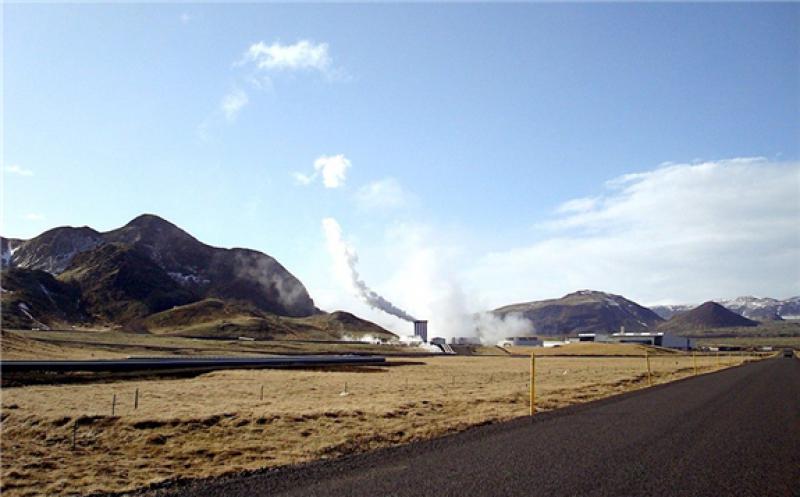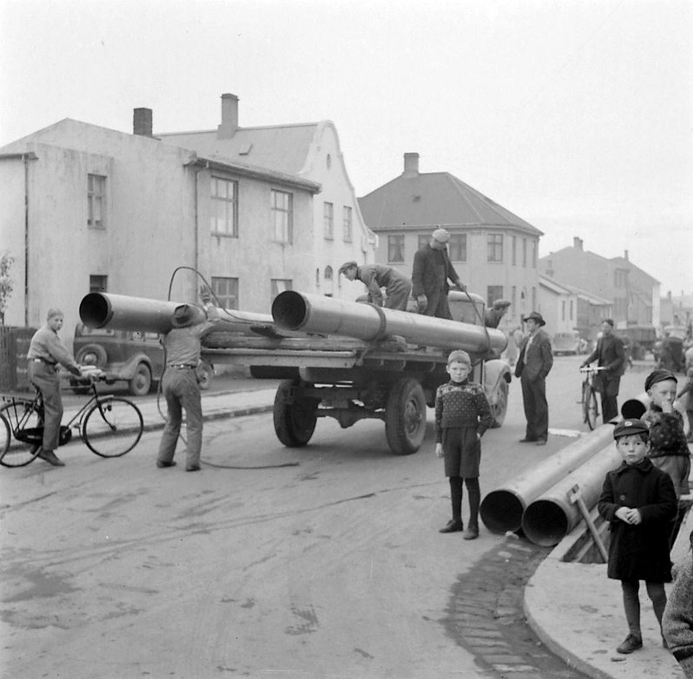How Iceland is blessed with its geothermal energy resources both for power generation and heat utilization and the innovations being worked on is topic of this article by Berglind Rán Ólafsdóttir, Managing Director of geothermal power operator ON Power.In an article published around the year end of 2019 in Icelandic publication Kjarninn, Berglind Rán Ólafsdóttir, Managing Director of ON Power – the geothermal power generation company of Reykjavik Energy, wrote about geothermal energy utilization, benefits and challenges in Icelandic publication Kjarninn.

The article was quite interesting and I though worth to share here. So below the translation of the article shared with permission.
Innovation in energy utilization
We Icelanders have not been spared by the energy of Icelandic nature in recent weeks and been reminded of how important our basic energy infrastructure is. We have access to a unique natural resource that comforts us in cold winters and provides light, drives progress as a community and enhances our quality of life living on this beautiful volcanic island.
We have used our geothermal energy to our advantage and are doing this well. I still argue that we can do better with this asset of our country.
Two of the biggest leaps of progress in Iceland were when electricity production began at the beginning of the last century and when geothermal energy superseded coal, oil and peat in heating. Financial benefits from these steps have been great and geothermal heating alone saves a high of around ISK 100 billion a year (or around USD 800m/ EUR 730m). Excluded in those calculations are, however, the enormous environmental benefits that come from reduced emissions and other health-damaging pollution such as smog.

We can do better with the hot water
About one-half of the water in the district heating system in the capital area of Reykjavik is groundwater, which is heated in the geothermal power stations of ON Power in the Hengill area. Heat supply utility Veitur Utilities, a sister company of ON Power, then distributes the hot water to households and businesses. However, the vast majority of heating utilities in the country utilize hot water derived underground directly. Called low temperature, it is normally picked up in the ground outside Iceland’s volcanic belt. The temperature of the water varies somewhat, but in most areas, heat utilities are still designed in a way that there is considerable waste. The vast majority of water flows from houses into the sewage system without any opportunity for further utilization of the heat still contained in the water. I am sure that the paradigm change regarding our consumption and co-existence with nature we are experiencing these days, will result in future systems being designed with fuller utilization of these assets in mind. My colleagues at Veitur Utilities are actually exploring this these days.
Regardless of the design of systems, the mindset matters a lot when it comes to managing resources properly. Hot geothermal water is an important natural resource that we are entrusted with to manage to the best of our abilities, just like any other natural resource. We can save a lot of hot water if most of us make small changes in our home, such as not allowing heat to escape unnecessarily. We need to keep our eyes open for new approaches. For example, should we cover swimming pools at night, a matter of course in many warmer countries? Should we systematically move towards more use of floor heating system, which utilizes heat more efficiently?
Challenges of high-temperature utilization
At ON Power, the energy produced is almost exclusively extracted from high-temperature areas, more specifically the Hengill area. There, I am even more certain that we can improve. Since the first geothermal power plant in Iceland, Bjarnarflag near Lake Mývatn in North-Iceland, was commissioned, technicians and engineers have designed ever more efficient power plants. The plant of Svartsengi marked a turning point, as it produced both electricity and hot water for the communities in the Reykjanes region. Here, however, I mainly discuss the power plants that are more proximate to me, namely the geothermal power plants of Nesjavellir and Hellisheidi, which both are located in the Hengill area near Reykjavik.
Both plants generate electricity for homes and businesses across Iceland and hot water for the district heating system in the capital area. The Hengill area, which is just outside the capital, is one of the largest and most beautiful geothermal areas in the country and popular as a hiking and recreational area as well. That is also an important part of the geothermal utilization, namely hiking in the geothermal areas and enjoying the natural beauty to clear our minds and re-energize both for tourists and nonetheless for us who live here.
Iceland is rich in hydropower and geothermal energy that are both defined as clean energy sources. However, both face environmental challenges. Among the major challenges of geothermal utilization is the fact that the geothermal heat is underground and thereby not visible except through fumaroles, fissures, and alterations. To evaluate it as an energy source, earth sciences are the key. Decisions regarding the utilization of the Hengill area are based on the results of our scientific research, which aims to create knowledge that will enable us to use the area wisely and in a sustainable way into the future.
When electricity is generated using geothermal energy, both carbon dioxide and hydrogen sulfide are released. The release of hydrogen sulfide is one of side effects of drilling deep into a volcanic area, since the steam extracted has dissolved materials in the bedrock that reach the surface during utilization. Although the amount of carbon dioxide emitted is extremely small compared to the emissions that come from non-renewable electricity production, e.g. with coal, we see this as a challenge because our ambition is to have no emission. And we have already taken steps towards emission-free production.
CarbFix – an innovation paying off
ON Power is in the fortunate position of having been endowed at conception, in 2014, with a wealth of clever ideas for the solution of many of the challenges presented by geothermal energy utilization. What counts the most is the scientific and technical personnel of the parent company, Reykjavik Energy, the University of Iceland and others. The CarbFix method – converting gas into rock – is not just about removing carbon dioxide (CO2) from the environment, but also hydrogen sulfide (H2S). Through endless work, it was possible to find a way to let the idea – mimicking the natural process of carbon dioxide becoming basaltic cavity fillers – work on an industrial scale. It was so successful that within two years, almost all the gas injected into the bedrock had mineralized and thereby permanently extracted from the atmosphere.
Today, one-third of carbon dioxide and the majority of hydrogen sulfide from the Hellisheidi Geothermal Power Plant are mineralized using the CarbFix method, and the next steps for both plants are being prepared. This process, which has succeeded in transforming the daily operation of the Hellisheidi Geothermal Power Plant, enables us at ON Power to operate in such a cost-effective way that carbon dioxide is currently cheaper to sequester with the CarbFix method than to buy emission allowances in the European market. It is a good example of how innovation pays off.